From finely sifted green bean powder, Hue artisans skillfully create flowers and fruits with eye-catching colors. So beautiful that when people hold them in their hands, they cannot bear to eat them.
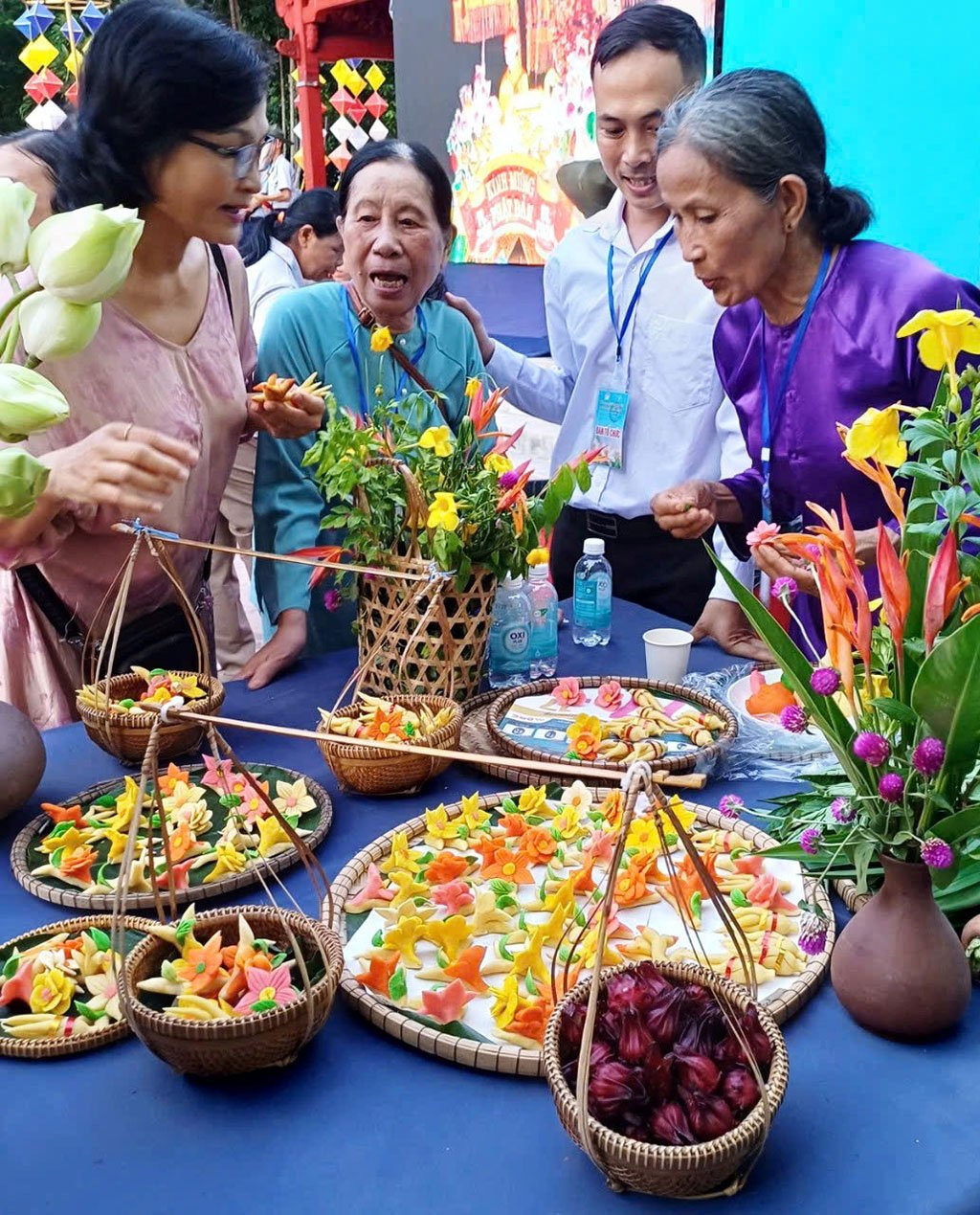
Artisan Ho Thi Kieu (right cover) introduces the steps of making banh khot.
LUXURY ORIGINAL CAKE STORE
Nestled along the poetic O Lau River, Phuoc Tich village (Phong Hoa Ward, Phong Dien Town, Hue City) not only embraces ancient moss-covered roofs, famous pottery craft... but also nurtures the heritage of making banh cap (also known as cotton cake) that is hundreds of years old. Another Tet season has come, these days the rare banh cap artisans of Phuoc Tich village prepare ingredients to make cakes, offering them to the ancestral altar. Mrs. Ho Thi Kieu, 66 years old, a famous artisan with the highest skill in making (molding) cakes in the village, said that since ancient times, every Tet holiday, her family has gathered to make banh cap, then sold it to many places in the province. All the villages and hamlets living along the O Lau River use banh cap as a solemn offering.
"After a while, this traditional cake is no longer known by many people because it has been replaced by modern cakes and jams. I have been making cakes for a living for decades, and seeing this type of cake gradually disappear makes me sad. Now that I miss the profession, during Tet I prepare to make a few dozen cakes to worship and give to my children and grandchildren," Ms. Kieu shared. Ms. Kieu's grandmother comes from Van Xa village (Huong Van ward, Huong Tra town, Hue city), the cradle of banh bat used as offerings. The story goes that when she was still in her hometown of Van Xa, Queen Thuan Thien Cao (mother of King Minh Mang) loved this type of cake very much. When offered to the queen, the cake still had a rustic look but was transformed in a more luxurious way with lotus seeds as an ingredient.
Having been taught the craft by her grandmother when she was only 9 years old, artisan Ho Thi Kieu initially only knew how to "catch" cakes after flowers such as apricot, orchid, chrysanthemum, bamboo or ginseng, ginger... Thanks to her passion and talented hands, Mrs. Kieu created and "catched" any shape of flowers, leaves, grass... that she saw. "Wherever I go, whenever I see strange fruits, I stop to admire them and then go home to practice making them. Gradually, I can "catch" flowers too. Catching cakes is very laborious, but when I sit down to make them, I forget about time. The petals gradually appear, urging me to do one thing after another," she shared.
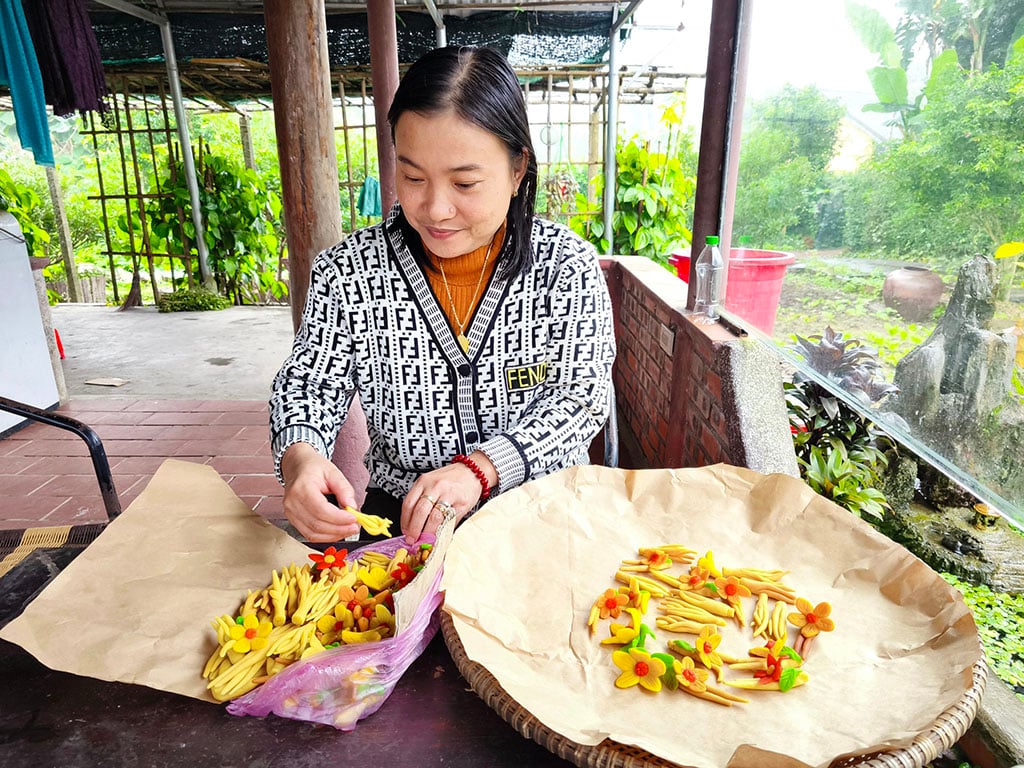
Ms. Trinh Thi Thu introduces the shapes of banh cap.
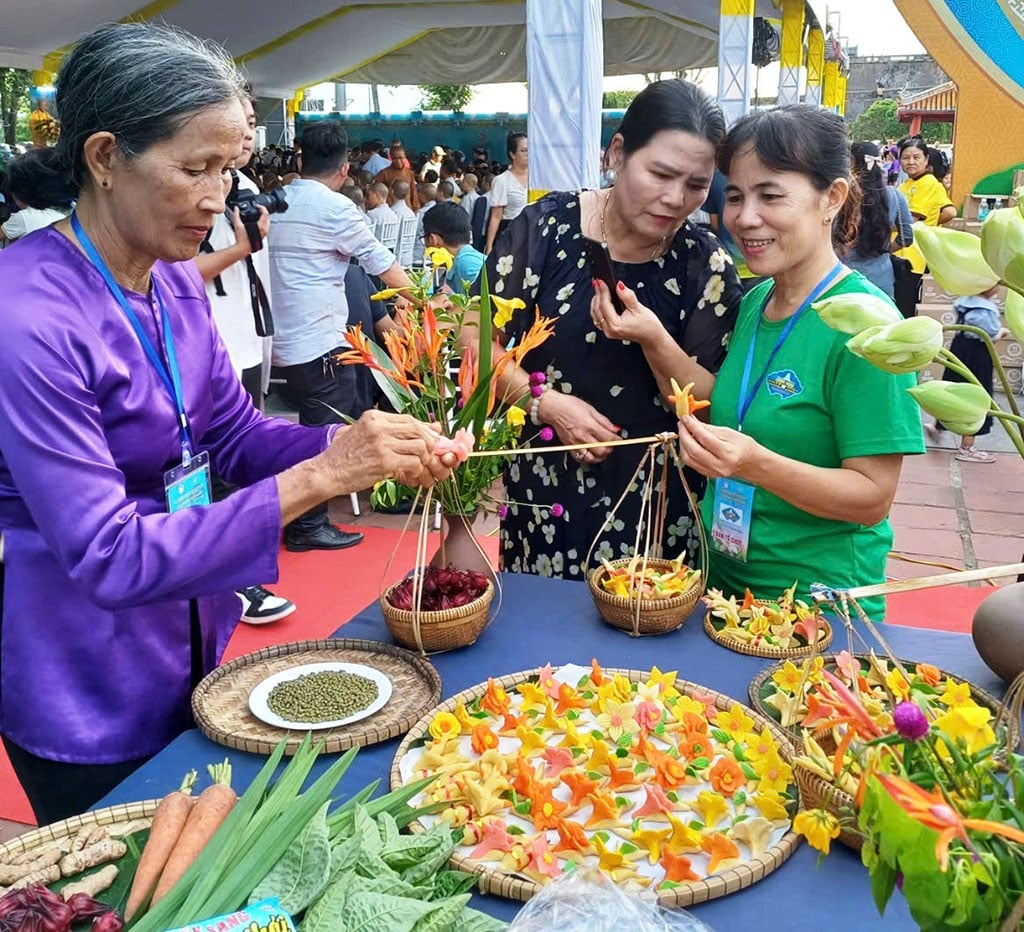
Visitors enjoy seeing the cakes being made.
SWEET FLOWERS
Being a good potter in Phuoc Tich village, when she was taught the craft by artisan Ho Thi Kieu, Mrs. Phan Thi Hong Thanh, despite her older age (75 years old), quickly became a famous banh cap maker. Mrs. Thanh said that when she first learned the craft, she failed many times because the batch of green bean flour did not turn out well. The secret to making cakes that are both beautiful and delicious lies in the stage of draining the flour. Sticky or dry flour makes it difficult for the artisan to shape the cake as desired. "Today, although there are many supporting machines, with banh cap, all the steps must be done by hand. First, the green beans must be sifted into a very fine powder and then mixed with sugar in a 1:1 ratio. When putting it on the stove to stir, the heat must be low to avoid burning. Drain the flour until it is smooth and not sticky, then remove it from the heat to cool," Mrs. Thanh recounted the process of preparing the dough.
Ms. Trinh Thi Thu (41 years old, a student of Ms. Ho Thi Kieu) added that people in Phuoc Tich village often add a little roasted sticky rice flour to create a "coat" for the cake. This makes it easier to pipe the cake. Regarding the stage of coloring the dough, from ancient times to the present, artisans have used colors from nature. Yellow is made from gardenia or squash flowers (depending on the season), green is made from pandan leaves or gotu kola leaves, red is made from artichoke flowers, purple is taken from the color of butterfly pea flowers... "The coloring water is kneaded with the dough and it's done. To have other colors, I was taught by the nuns how to mix the above colors and pipe them into cakes," Ms. Thu said.
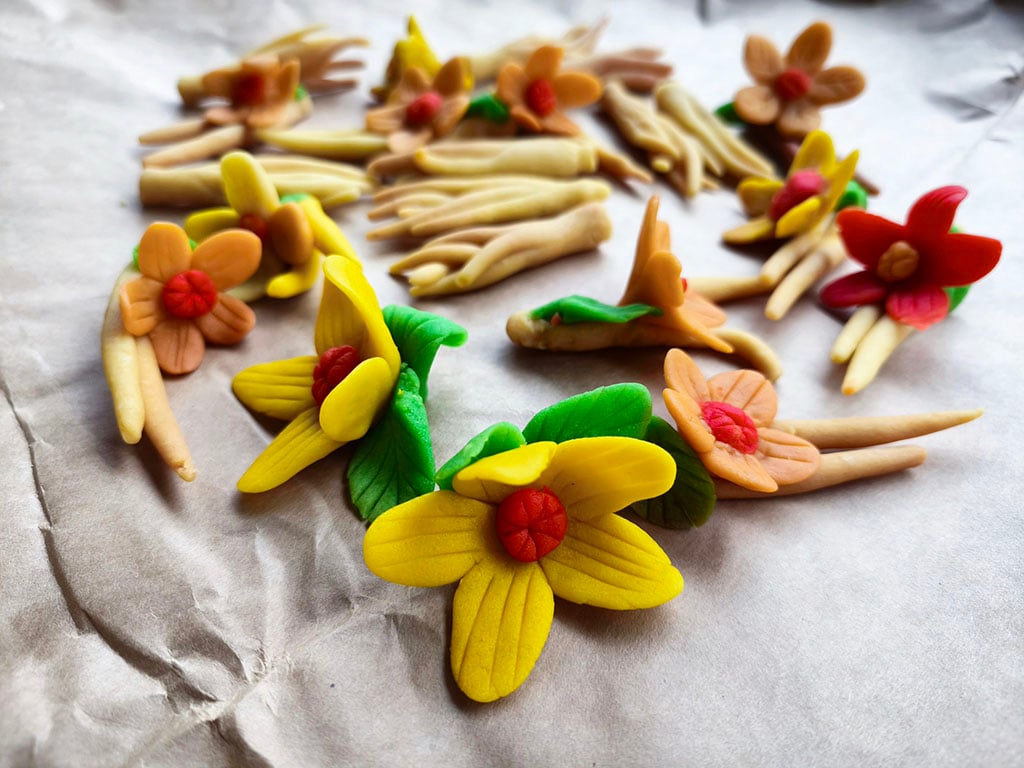
Looking at the flowers made from green bean powder makes you feel spring is coming.
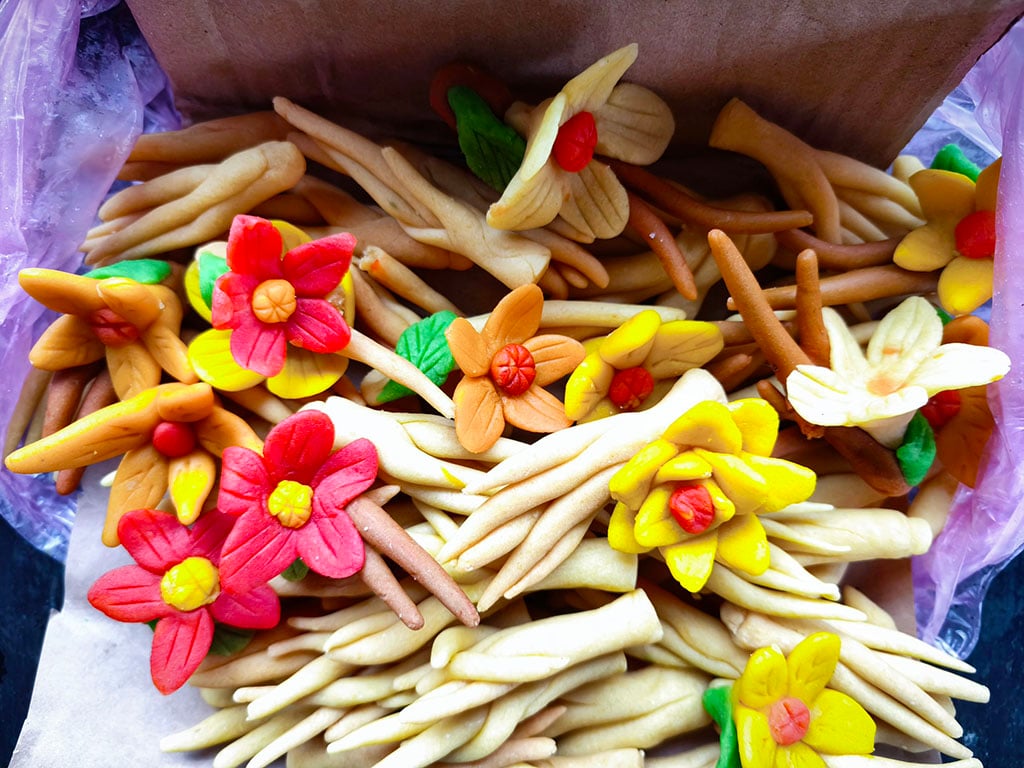
The cakes are made of real flowers and ginseng roots, so beautiful you can't bear to eat them.
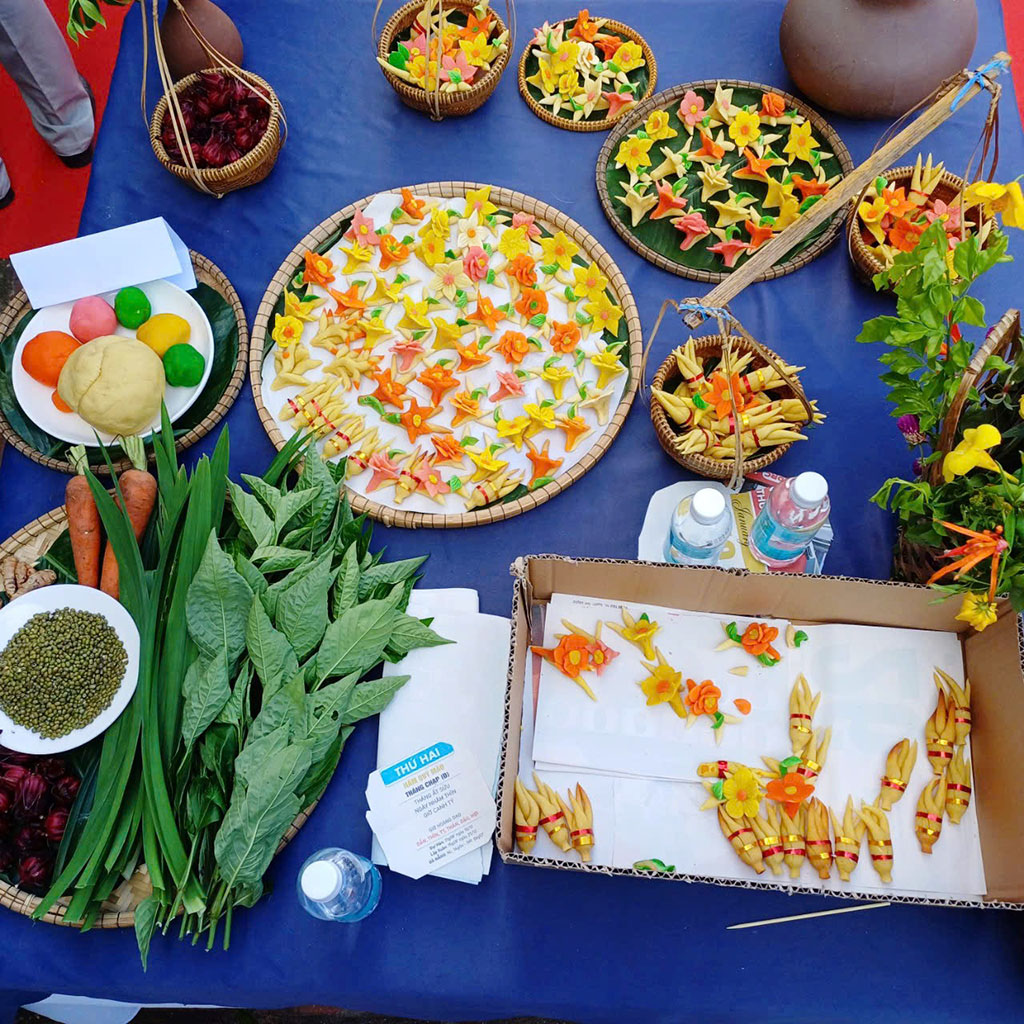
The spring flower garden is made up of colorful cakes.
In the past, banh cap was often arranged on banh in, banh su se, banh it... to decorate because of its high aesthetic value, especially during Tet. In order for the cakes to be displayed on the altar for many days, the drying process is focused on by artisans. Ms. Thu shared that the cakes are most delicious after being dried for 2-3 hours because the cakes are still soft. When eaten, the cake feels like it "bursts" in the mouth because the green bean flour is sifted. If left longer, the cake needs to be harder so it must be dried. After being "caught", the cakes are put into a tray (like a tray) and placed on a pot with hot coals underneath to dry for 7-8 hours. When taken out of the pot, the banh cap is still colorful and in the same shape as when it was first made.
"For ginseng cakes (shaped like ginseng roots), after drying, we often decorate them with gold and red foil wrapped around the body of the cake," holding the cake in her hand, Ms. Thu explained, "Many people call it ginseng cake but it is actually a type of cake made in a similar way to making flowers. Skilled people can mold it into any shape they want. Like Aunt Ho Thi Kieu, with just a piece of dough, she can mold a whole branch of yellow apricot blossom without having to meticulously make each petal to attach like us...".
I fondled the cakes for a long time and took a bite to taste. First, I heard the crunchy sound in my mouth. Then, I chewed carefully, the cakes melted evenly, the sweet and rich taste gradually spread in my mouth. These "sweet flowers" really awakened many senses at the same time... (to be continued)
Source: https://thanhnien.vn/giu-huong-tet-xua-banh-bat-dep-den-muc-khong-no-an-185250114211039854.htm


![[Photo] Students of Binh Minh Primary School enjoy the full moon festival, receiving the joys of childhood](https://vphoto.vietnam.vn/thumb/1200x675/vietnam/resource/IMAGE/2025/10/3/8cf8abef22fe4471be400a818912cb85)



![[Infographic] Notable numbers after 3 months of "reorganizing the country"](https://vphoto.vietnam.vn/thumb/1200x675/vietnam/resource/IMAGE/2025/10/4/ce8bb72c722348e09e942d04f0dd9729)



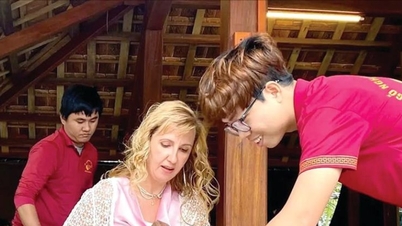



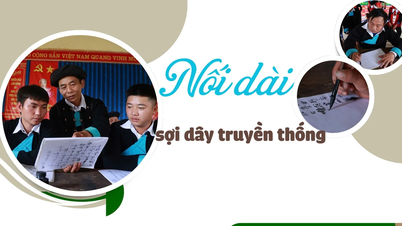
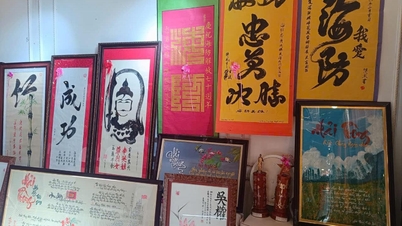









![[Video] Promoting tourism development associated with traditional culture of ethnic groups](https://vphoto.vietnam.vn/thumb/402x226/vietnam/resource/IMAGE/2025/10/4/1a14a065460841be8965c8eace47420f)

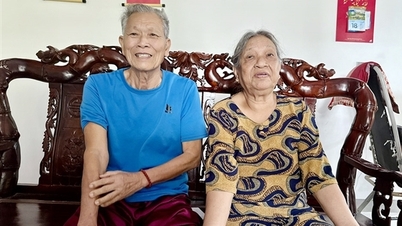






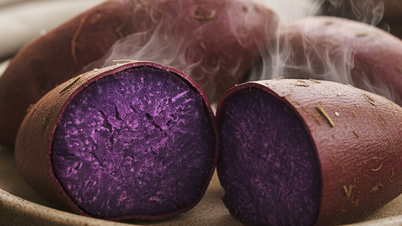
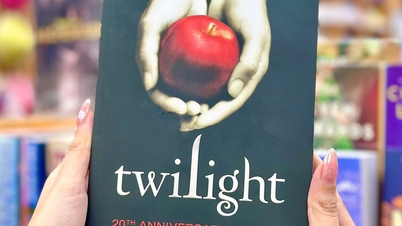
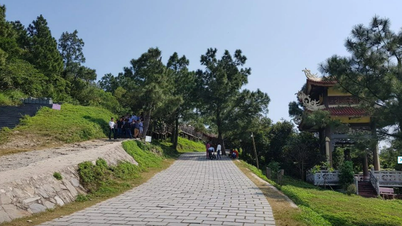



![[Photo] Prime Minister Pham Minh Chinh chairs meeting to deploy overcoming consequences of storm No. 10](https://vphoto.vietnam.vn/thumb/1200x675/vietnam/resource/IMAGE/2025/10/3/544f420dcc844463898fcbef46247d16)







































































Comment (0)